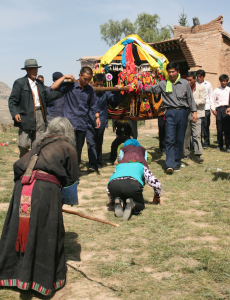Conférence de M. Gerald Roche
Anthropologue
Qinghai Normal University
Creolization on the Tibetan Plateau
Lieu : Maison de l’Asie (dans le Grand Salon, au 1er étage),
22, avenue du Président Wilson (Métro Iéna ou Trocadéro)
Vendredi 5 octobre 2012, 10-12h

Abstract:
How culturally diverse is the Tibetan Plateau? How is the diversity of the region spatially and ethnically patterned? The present work is part of a broader project exploring these issues. Specifically, I will discuss the ways in which interactions between Tibetans and their neighbors structure regional diversity, and also the extent to which creolization is a significant factor in the dynamics of cultural diversity on the Tibetan Plateau. I include in my coverage of creolization both the word’s original sense of a ‘creole’ as someone born outside their native land, and the more contemporary meaning of ‘creolized’ as mixed. This study of creolization is drawn from a region known as Sanchuan, a cluster of valleys on the northeast Tibetan Plateau, where Tibetans, Han Chinese, various Muslim populations, and Monguor (Tu) live in close proximity. My case study focuses on a debilitating affliction that all non-Tibetans in the area claim is caused by Tibetans. I describe how what superficially appears to be an instance of a sharp ethnic divide, is actually evidence of creolization that has incorporated local ethnic groups into a largely shared, transethnic culture. This trans-ethnic culture includes systems of relatedness focusing on the house, and a religious worldview centered on the efficacy of tutelary deities. What this study demonstrates is that even in cases seemingly based on ethnic distinction, creolization and shared culture play important roles. My contention is, therefore, that diversity on the Tibetan Plateau may in part be patterned according to ‘zones of creolization’ where distinct, localized, and trans-ethnic vernacular cultures arise.
Keywords:
creolization, cultural diversity, Tibetan Plateau, Monguor, Sanchuan
